As the tide slowly crept down the beach on the island of Nosy Maroantaly, we saw the ragged expanse of reef emerge from under the surf. There was a tangible increase in the excitement of the gathering of fishers, but there was also a hint of trepidation. Would the wait be worth it?
For the migratory fishing communities on the islands of Nosy Maroantaly and Nosy Marify, today was the product of two month’s patience. The opening day of the first temporary octopus fishery closures in the Barren Isles archipelago of western Madagascar.
A community-led approach
Temporary octopus fishery closures are probably Blue Ventures’ most emblematic model in Madagascar. By demonstrating in a short time-frame that fisheries management can make economic sense, closures often inspire broader conservation initiatives.
The first community-led octopus fishery closure was in the village of Andavadoaka, southwest Madagascar, in 2004, and its success catalysed the creation of the Velondriake locally managed marine area (LMMA) in 2006.
As the word spread, a grassroots marine conservation revolution started sweeping across Madagascar’s coastal communities, and today more than 70 LMMAs have been established across Madagascar’s coasts, covering 17.7% of its continental shelf. These LMMAs have formed a network called MIHARI, that raises their voices on a national level and enables them to share best practice.
A closure in the Barren Isles
The Barren Isles is the largest LMMA in the Indian Ocean, and is co-managed by the Vezo Miray Nosy Barren Association (VMNB), a collection of elected leaders from the six coastal villages and seven islands in the archipelago.
The VMNB have heard tales of successful fisheries closures from other LMMA representatives at MIHARI Network forums, and brought this information back to their communities in the Barren Isles. Hearing this news, the fishers in the islands of Nosy Marify and Nosy Maroantaly decided that they wanted to implement temporary octopus fishery closures themselves.
Octopus fishing is practiced on both islands, but it has never been as important an economic activity for the communities as other fisheries. Therefore, in June and July respectively, the fishers in Nosy Maroantaly and Nosy Marify were able to stop fishing sections of their octopus fishing grounds without losing out on their livelihoods. The perfect opportunity to test the efficacy of this approach in the Barren Isles.
A waiting game
In the two months following the closure, I saw the communities patiently wait for the opening day, and I heard them excitedly discuss the potential positive effects of the temporary reserve. In Nosy Maroantaly, the enthusiasm was so great that the community even decided to put in place additional rules, to maximise the chances of success. After the first month of the closure, any kind of fishing was prohibited in the reserve area whenever the water level was at two metres or less.
When opening day finally came, a ceremony was held on each of the islands. Local authorities, journalists and the BV team gathered with the communities to celebrate the ending of the closure period. In both ceremonies, representatives from the VMNB gave speeches emphasising the importance of these first temporary fishery closures as examples of community-led resource management that will hopefully become an example for the region.
The speeches on Nosy Maroantaly were rousing, but towards the end I could really feel everyone’s eagerness to get out on the reef and see for themselves what the closure had achieved. Once the closure was formally opened, all the fishers took advantage of the low tide and strode into the shallows. I was impressed with the high participation, almost the whole community seemed to be out on the water!
Patience rewarded
As the minutes passed, I could tell that the fishing was going well by the number of octopuses in the returning fishers’ hands, and the smiles on their faces. We had data collection teams in place on both Nosy Maroantaly and Nosy Marify, in order to monitor the catches as they came in.
The data collected matched our positive first impressions. On Nosy Maroantaly, the total catch in less than an hour and a half was 96 octopuses. The total catch weight was 182.7 kg meaning that 2.4 kg of octopus was caught for every minute for a fishing time. The most successful individual fisher caught ten octopus for total catch weight of 17.9kg!
On Nosy Marify, the figures were even more impressive. 80% of the fishers caught an octopus heavier than 3 kg! The largest octopus caught weighed 4.32 kg, which was an island record! All the fishers were surprised and delighted by the size of the octopus they were catching.
Looking forwards
After opening day, meetings were organised on both islands to discuss the results of the closures, and the communities were enthusiastic in their assessments.
We did not expect to see octopuses that big and numerous in this reserve!”
– Modeste, a fisher from Nosy Marify“I had never seen such big octopuses in Nosy Marify!”
– Lozini, a fisher from Nosy Marify
In the Nosy Maroantaly meeting, Mr. Robustin, the vice-president of VMNB, declared “We did not expect such a positive result! We have never managed to catch so many octopuses in Nosy Maroantaly!”
The president of the Nosy Maroantaly community expressed the desire to repeat the experience on a larger scale, saying “We have such a big octopus site. In the future we should do octopus fishery closures again, and rotate the reserve areas so that we maximise the benefits.”
These first community impressions show a huge enthusiasm for the temporary fishery closure approach in the Barren Isles. The monitoring of the closures areas will continue to ensure that the full impact is recorded, so we are all hoping for similar positive results in the coming days. First things first though, we must raise a glass to this successful and exciting day – which is exactly what we did at the community parties on the night of the opening day.
Discover more about the challenges facing the Barren Isles archipelago: a jewel in the sapphire sea
Our work in the Barren Isles is made possible thanks to generous support from the Darwin Initiative through UK Government funding, the GEF through UNEP under the Dugong and Seagrass Project and the Critical Ecosystem Partnership Fund.


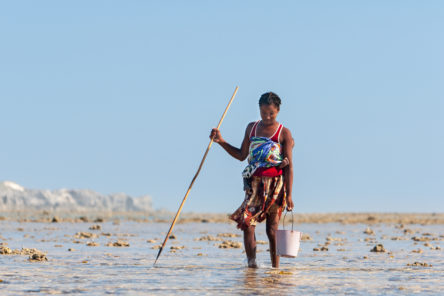
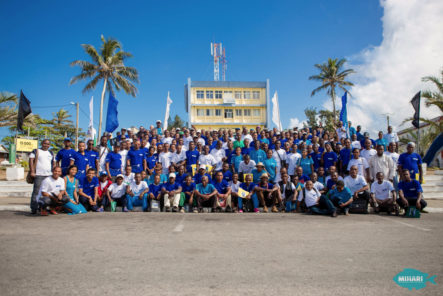
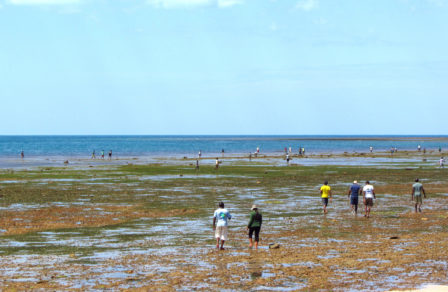
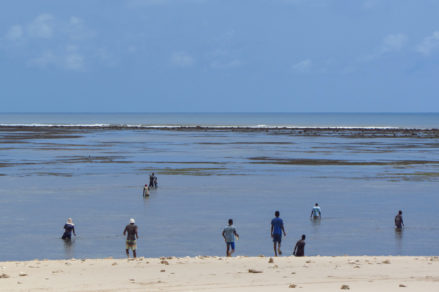
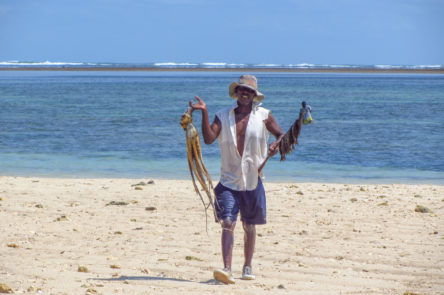
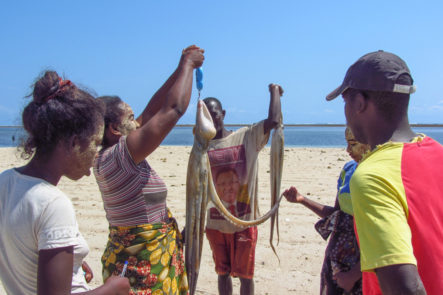
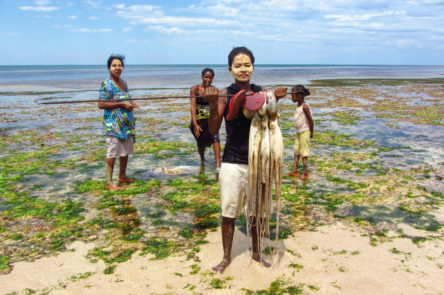
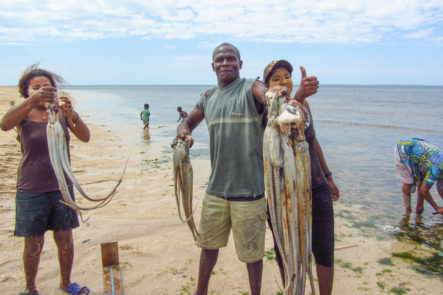
Beautiful work with the Vezo fishermen.
I started in Toliara in June 1965 !!! and I know only the Toliara and Ifaty-Ranobé bays and coral reefs. but at these times we have to discover the coral reefs and their communities. In 1969 we studied the outer barrier reef slopes and passages diving down 70 m deep.I am among those who created the Station marine de Tuléar, near the harbour.
I appreciate the works done by The Ble Venture association.
“Bon courage pour la suite”
Prof. Dr. Bernard A. Thomassin, Marseilles